1. Tools for Reading
1.1. Newsla
1.1.1. A website that provides news articles with the option of changing the reading level. Teachers can assign reading but change the number of characters and level. Teachers can also assign quizzes that go along with the srticles.
1.2. Reading Rewards
1.2.1. A website that allows students to track their reading. Students receiver awards and badges, giving students incentive to read more.
1.3. Epic!
1.3.1. Students are able to choose from an enormous library of fiction and non-fiction books. There are even audio-books and read-a-loud books. Teachers are able to assign books and monitor what students are reading.
1.4. ReadWorks
1.4.1. An online platform that allows teachers to assign reading/vocabulary/short answer questions to students on a variety of topics.
2. Tools for Math
2.1. Khan Academy
2.1.1. Students are able to watch videos and practice different math topics. Teachers may assign practice and monitor what students are working on.
2.2. Wolfram
2.2.1. A math website that allows students to input math problems. The website will provide answers along with step by step solutions to help with homework and any confusion on any math topic.
2.3. Study Island
2.3.1. Students are able to work on math, as well as ELA, science, and social studies. Teachers may assign or students can work their way through Missouri Learning Standards.
2.4. Prodigy
2.4.1. Students are able to work on teacher assigned standards in a video game format. Students answer math questions in order to buy different powers and animal helpers.
3. Presentation
3.1. Google Slides
3.1.1. A google application that allows its users to make presentation that can be accesses from any device. It can also be shared with other users and edited by many people.
3.2. NearPod
3.2.1. An interactive tool that allows students to be active members of the presentation. These lesson can have assessments, surveys and simulations built into them.
3.3. Prezi
3.3.1. An innovative presentation website that uses connections and spatial relationships in order to make the presentation more enjoyable.
4. Videos
4.1. Youtube
4.1.1. A website that allows people to watch and share video on their "channels".
4.2. EdPuzzle
4.2.1. A website that allows educators to assign students videos to watch with built in questions.
4.3. TeacherTube
4.3.1. A website similar to youtube but specifically used for educational videos.
4.4. Netflix
4.4.1. There are a plethora of educational videos and documentaries.
4.5. BrainPop
4.5.1. There are videos over a variety of topics including: math, science. and social studies.
5. Tools for Writing
5.1. Grammarly
5.1.1. A website that helps students write quality papers by checking their spelling, grammar and delivery. The site can also check for plagiarism to help students avoid problems with their assignments.
5.2. EasyBib
5.2.1. A website that allows users to easily create citations in order to make a work cited for papers. This site also has other features such as plagiarism check.
5.3. GoogleDocs
5.3.1. A google application that allows students to write sharable papers. Students can edit their papers anywhere and can even create a work cited in the document
5.4. No Red Ink
5.4.1. Teachers are able to assign a variety of grammar, spelling and writing activities to help students improve.
6. Tools for Science
6.1. PhET:
6.1.1. A website that allows students to use simulations in order to learn complex science concepts.
6.2. PTable
6.2.1. A website that allows chemistry students to learn everything about every element on the periodic table. This interactive website provides information such as properties, uses and even electronic structure. Students can even take tests about these element.
6.3. PBS Learning Media
6.3.1. A PBS website that provides simulation and interactive lesson to help students better understand complex concepts.
6.4. Generation Genius
6.4.1. A website that provides videos, lessons and activities that students are very engaged and interested in.
6.5. Legends of Learning
6.5.1. A video game format for students to learn/review math and science topics
6.6. Mystery Doug
6.6.1. Science 'episodes' that answer students questions about anything science related. This link goes to a constellations episode.
6.7. Mystery Science
6.7.1. Lessons grouped by NGSS standards and grade level. Each includes an interactive activity for students to do.
7. Assessments
7.1. Google Forms
7.1.1. A free google application that allows teachers to survey students online. These assessments can include multiple choice, short answer or essay questions.
7.2. Socrative
7.2.1. An easy way to assess students and keep them engaged during class. It allows teachers to track learning with quick assessments that may include various types of questioning.
7.3. Kahoot
7.3.1. A fun and competitive game that requires students to answer questions quickly and accuretly in order to win
7.4. Edulastic
7.4.1. A test making website that allows educators to access question banks related to their curriculum and standards. This website also allows teachers to access statistics in order to monitor student growth.
7.5. Quizlet
7.5.1. Students can create their own vocabulary study sets, or teachers can create/assign them to students. There are a variety of games and ways for students to study.
8. Social Media/Networking
8.1. Twitter
8.1.1. A website that allows people to share their thoughts with a limited number of characters.
8.2. Facebook
8.2.1. A social media website that allows people to become "friends", share their thought, videos, articles and pictures.
8.3. Pinterest
8.3.1. A website that allows people to share or "pin" things they found online. These pins are then placed in various categories.Teachers are able to search activities and lessons based on a specific topic or type of activity.
